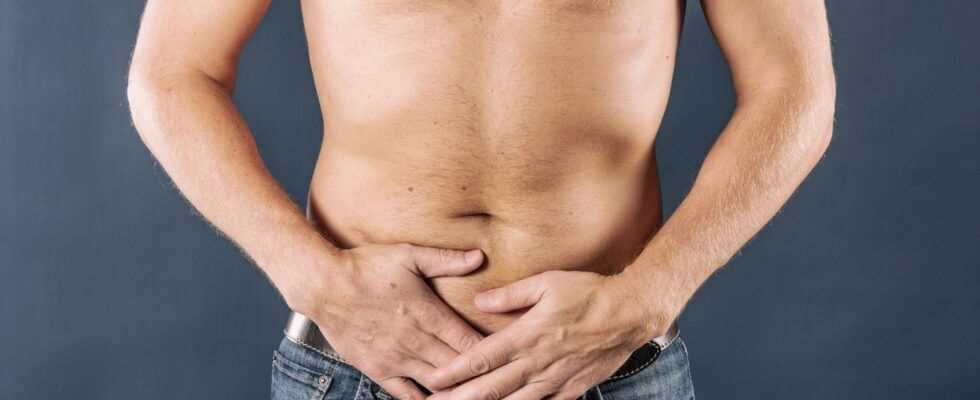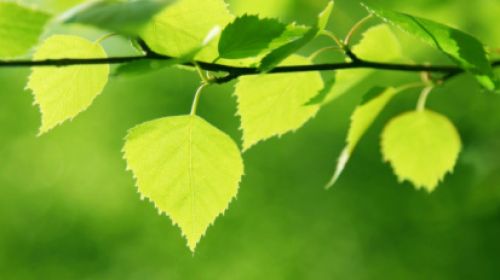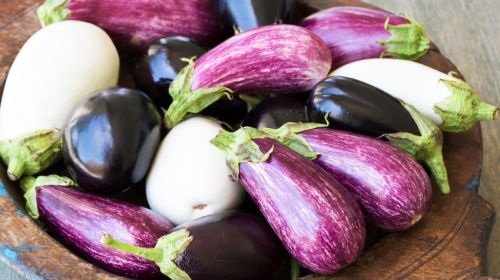Small kidney stones, i.e. urinary stones in the kidney, the size of a grain of rice or a pea, usually go off with the urine on their own and are called kidney semolina. From a certain size, however, the stones can be very painful. Everything from causes and symptoms to removal and proper treatment of kidney stones.
- Kidney stones can lead to severe renal colic and can be very painful.
- © iStock.com/DmitryTkachev
Kidney stones are crystalline stones in the kidney. With the urine, the kidney excretes certain substances that are normally in a dissolved state. If these substances are present in too high a concentration, crystals form that can grow into stones in the kidneys. Some kidney stones are a few millimeters in diameter like a grain of rice, others grow several centimeters in size so that they fill the entire kidney basin.
The stones can remain in the kidney (nephrolithiasis) or pass from there with the urine into the ureter, bladder and urethra. Smaller stones are usually eliminated unnoticed. On the other hand, kidney stones can also cause severe, colicky pain cause. They can get stuck in the ureter and cause urine to accumulate there.
At a glance:
Frequency of kidney stones
Most often kidney stones or urinary stones appear between the ages of 30 and 60. In Germany, about five percent of the population are affected – men have kidney stones twice as often as women. Kidney stones are more common in hot, dry, mountainous regions. People in affluent societies are more affected than in countries with malnutrition. One reason for this is that a protein-rich diet favors the formation of kidney stones.
Symptoms of kidney stones
Often, both kidney semolina and kidney stones go unnoticed by those affected, since the stones themselves do not cause any typical symptoms. Only when a stone from the kidneys migrates into the ureter and, due to its size, sticks to narrow spaces, can the cramp-like muscle contraction lead to severe pain (renal colic). Depending on where the kidney stone is located, cramp-like pain occurs in the back and / or in the lateral lower abdomen on. This pain in the area of the affected kidney can radiate in all directions over the back. In some people, the pain radiates to the genitals. Many sufferers also complain of sweating, nausea or even have to vomit. Blood in the urine is also common with kidney stones.
However, kidney semolina can often be rinsed out without discomfort.
Causes of kidney stones
There are several known causes that play a role in the formation of kidney stones.
Family causes: Some studies show that kidney stones are more common in some families than in others. It has not yet been clarified whether one can speak of heredity or whether the children have adopted unfavorable eating habits from their parents.
Organic problems: With certain malformations in the kidneys, for example when the urinary tract is too narrow, even small kidney stones cannot migrate on their own.
Urinary tract infections: So-called infection stones occur in connection with bacterial cystitis.
Too little liquid: Either you take in too little fluid or you lose an extremely large amount of fluid through excessive sweating during physical exertion or diarrhea.
Wrong diet: An excessive amount of milk and dairy products increases the concentration of calcium in the urine. Too much meat, offal and sausage increases the amount of purines and uric acid in the blood – the result can be uric acid stones. A high-protein diet also promotes the formation of kidney stones.
Special diseases: for example overactive parathyroid glands and inflammatory bowel diseases
Bedridden
If the acidity (pH value) of the urine is below 5.5 or above 7, this can also favor the formation of crystals. The pH of the urine depends on the diet. How the various types of stone are created has not yet been finally scientifically clarified. However, it has been proven that certain substances contribute to kidney stone formation when the urine is oversaturated with it.
Diagnosis of kidney stones
First of all, the doctor will ask the person affected if kidney stones are suspected and examine him physically. It also includes tapping the flank. If there is urine congestion in the kidney, the affected person often feels pressure pain.
There may be additional evidence of kidney stones in the urine and blood. Imaging procedures make the kidney stones visible. Red blood cells in the urine can indicate kidney stone disease. If there are white blood cells in the urine, there is an inflammation. This is often the case with kidney stones because urinary tract infections are often associated with kidney stones. The blood test allows the doctor to learn more about kidney function, inflammation and possible causes of kidney stones.
Ultrasound and X-ray examinations of the urinary tract are the basic part of the diagnosis. These imaging procedures allow the doctor to determine how many stones there are, how big they are, and where exactly they are. Urinary congestion and inflammatory processes in the kidney can also become visible in this way.
If these examination methods do not provide sufficient clarity, a computed tomography, an X-ray examination to show the ureters and the pelvis using a specially shaped catheter (retrograde pyelography) or a kidney mirroring (renoscopy) can provide further information as to whether they are kidney stones.
Removal of kidney stones and other treatment options
Kidney semolina can be rinsed out with sufficient hydration and the support of diuretics before the stones can continue to grow.
If you suspect kidney stones, a urologist must be consulted. In many cases, supportive measures can be used to achieve a spontaneous stone exit without the need for active stone removal through an intervention. Supportive measures include exercise (e.g. hopping) and increased fluid intake. Herbal, diuretic preparations with tufted root, orthosiphon and goldenrod herb can also help here. In acute colic, strong pain relievers such as metamizole are usually used.
These measures must be monitored by the attending physician through regular X-ray and / or ultrasound examinations in order to track the position of the stone and to recognize complications (such as urine build-up) in good time. If the discomfort persists for several days and the stone does not move, infection or urinary retention occurs, the urologist must remove the kidney stone. Surgical treatments include extracorporeal shock wave lithotripsy (crushing the stone from the outside) and endoscopic crushing from the inside using laser technology, for example. Even if the stone is larger than eight millimeters or there is severe pain that cannot be managed with pain relievers, the stone is removed by surgery.
Course and complications
Kidney stones that are less than two millimeters in diameter go off with the urine in 80 percent of the cases. This is rarely the case with larger stones. If a stone gets stuck, depending on the location, it can lead to considerable complaints – such as a painful renal colic. Kidney stones that block the urinary tract can cause urine to build up. This allows bacteria to penetrate more easily and cause infections of the urinary tract (urocystitis) and kidneys (interstitial nephritis).
In the worst case, kidney stones can lead to kidney failure. If the bacteria enter the bloodstream, they can trigger life-threatening blood poisoning (urosepsis).
Every second person who has had kidney stones will get it again. With the right preventive measures, however, the risk of renewed stone formation is reduced to a minimum.
Prevent kidney stones: how can you protect yourself?
Kidney stones cannot be completely prevented. However, the risk of getting it can be greatly reduced by a very simple measure: drink a lot. At least two liters of liquid (Water or unsweetened herbal tea) are recommended daily so that the substances can be dissolved in the urine and the urinary drainage pathways are flushed out. The specific weight of the urine should not exceed 1.010-1.030 g / ml. You can check this yourself with test strips for urine.
When it comes to beverages, coffee and alcoholic beverages should be avoided if you have urinary stones because they cause a "urine flow" first, but then the urine becomes more concentrated in the following hours and stones can form due to undissolved substances. Iced tea should also not be the drink of choice if there is a risk of kidney stones: It contains plenty of oxalic acid, which favors the formation of kidney stones.
On the other hand, those affected cannot do anything wrong by reaching for water or unsweetened herbal teas. Also recommended: calcium-rich milk in moderation. Because calcium is able to bind oxalic acid and thus render it harmless. So a dash of milk in black tea, which also contains oxalic acid, is a good tip for people with kidney stones.
Vegetarian diets prevent kidney stones
The diet is reflected in the excretion through the urine. It is known that too much protein favors kidney stones. Therefore, it is recommended to eat animal protein (sausage and meat) in moderation.
Depending on the type of stone, it may make sense to avoid special foods such as vegetables rich in oxalic acid (such as Swiss chard, spinach and rhubarb). Regular, preventive flushing of the urinary tract is also recommended. Here, too, herbal help with a diuretic effect, such as the common hackle root, have proven effective.



